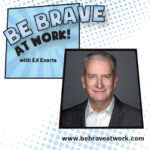Frequency of change refers to how often it occurs. There was a time when organizations were proud of their stability and consistency. Acquisitions were infrequent, and words like “right-sizing” and “down-sizing” were not in the dictionary. Your job description had not changed for years.
Today, mergers and acquisitions are a daily event. Yesterday’s technology upgrades quickly become obsolete. Roles, responsibilities, and relationships change faster than a name plate on a cubicle. If you are like so many others in your organization, you have had three to five bosses in the past five years.
In a March 2014 poll conducted by Inc. magazine, 28% of the respondents’ business models changed in the last five years; 36% of the respondents’ mix of products and services changed; and 47% of the respondents’ financial structure changed. I frequently speak with clients who have received emails that a work group – for example, Account Management – has reorganized its staff and function, effective immediately. These same clients attest that it feels like the same work group just reorganized six months earlier! I worked with a client company whose leadership and organizational structure was relatively the same for almost forty years. This same organization has changed its leadership and “go-to-market” structure three times in the last six years.
So think about this: In the past five years, what has been the frequency of change in your organization for something that significantly impacts its employees or its customers?
~~~~~~~
Raise Your Visibility & Value: Uncover the Lost Art of Connecting on the Job is available
in AUDIO FORMAT here on Amazon and iTunes
and in HARD COPY here on Amazon and Barnes & Noble.







